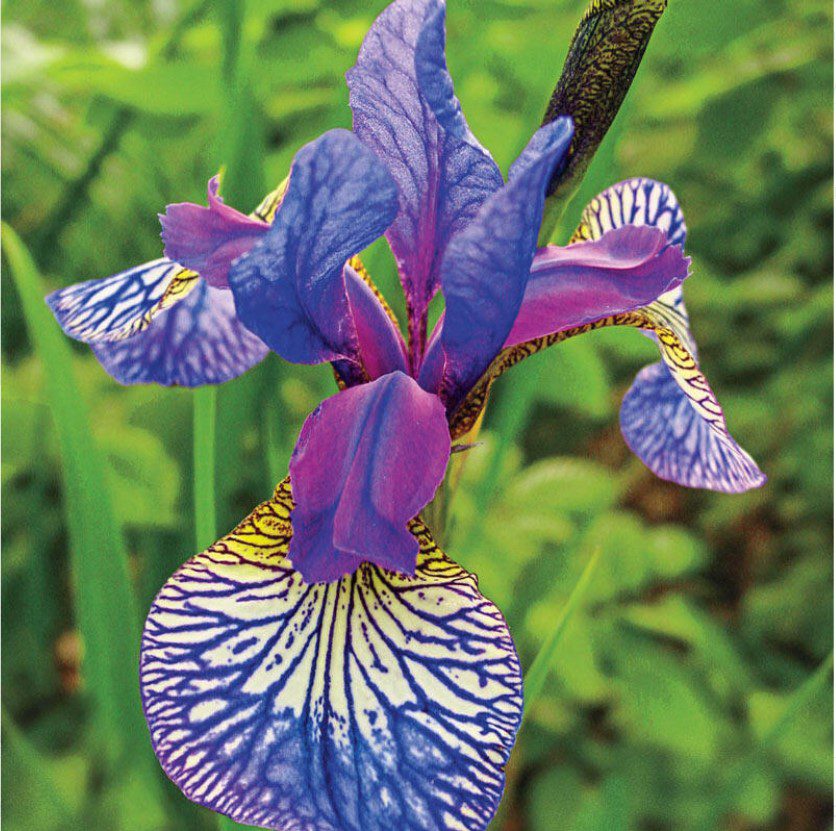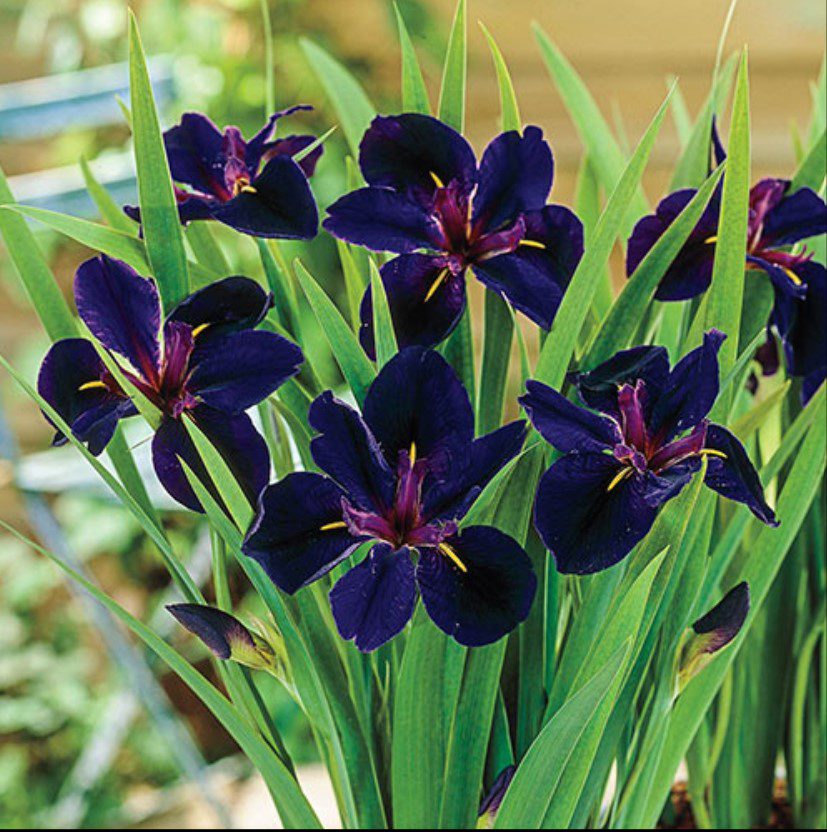Iris: Bearded, Siberian, Louisianan, Japanese, Native — Go See Them

Tulips, tulips, tulips. Crowds trample each other every year to see tulips in Holland. Why not iris? Do tulips have a better PR company? Iris are blooming now, and through the beginning of June. And, you know, Giverny...
Irises are more complex and stately than tulips, and also dreamier. These days they have also been bred to be as colorful as a Pride parade. A day strolling through an iris garden could be like looking at orchids, except down instead of up. Darn if you aren’t ready to start ordering some to plant in the garden come fall.
For instance, iris are often are scented. One (Iris pallida) smells like grape jelly). Tulips have petals. That’s it. Irises have standards, falls, beards, crests, arms, lips, signals and sometimes horns.
Deer eat tulips. They don’t eat iris. Enough said?
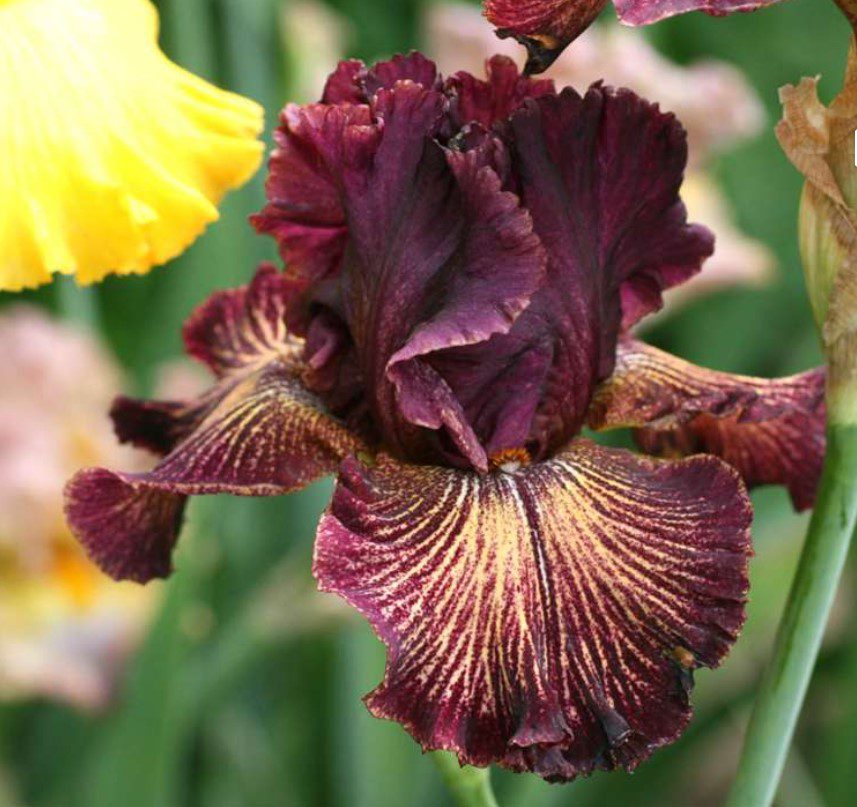
Just as orchids and roses have passionate breeders, irises have growers who spend years trying to outdo each other with exquisite combinations of ruffles and veins, height, number of flowers on a stem, subtle color combinations, or a wowie eye-full to win the coveted Dykes Memorial Medal. In 1978, the demur Beverly Sills, a ruffled pink, was the winner, and it continues to sell out to this day at retailers like Willow Bend Iris Garden.
In 2002, Keith Keppel won the medal with a lightly scented iris he grew from seed. He called it Drama Queen. Here is his description, lightly edited: Early midseason bloom. Standards near-solid dark blackish cyclamen purple, very faint golden buff ground toward base; style arms blended rose brown and slate purple; Falls cyclamen, golden capucine buff; ground showing as blaze and distinct veining; beards rusty orange, purple mid-layer, white base.
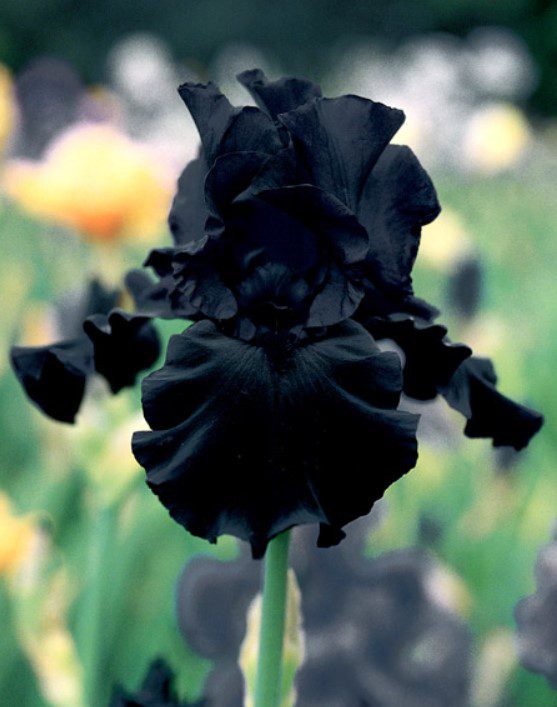
In Greek mythology, Iris was the goddess of the rainbow. The German bearded iris has, today, conquered every quarter of that rainbow, from snowy white (the combination of all colors through magenta and “capucine” (I believe Kepper meant the flower, not the actress to jumped to her death, or “Capuchin,” the monkeys or the monks) to near black — the iris called “Hello Darkness,” another Dykes medal winner.
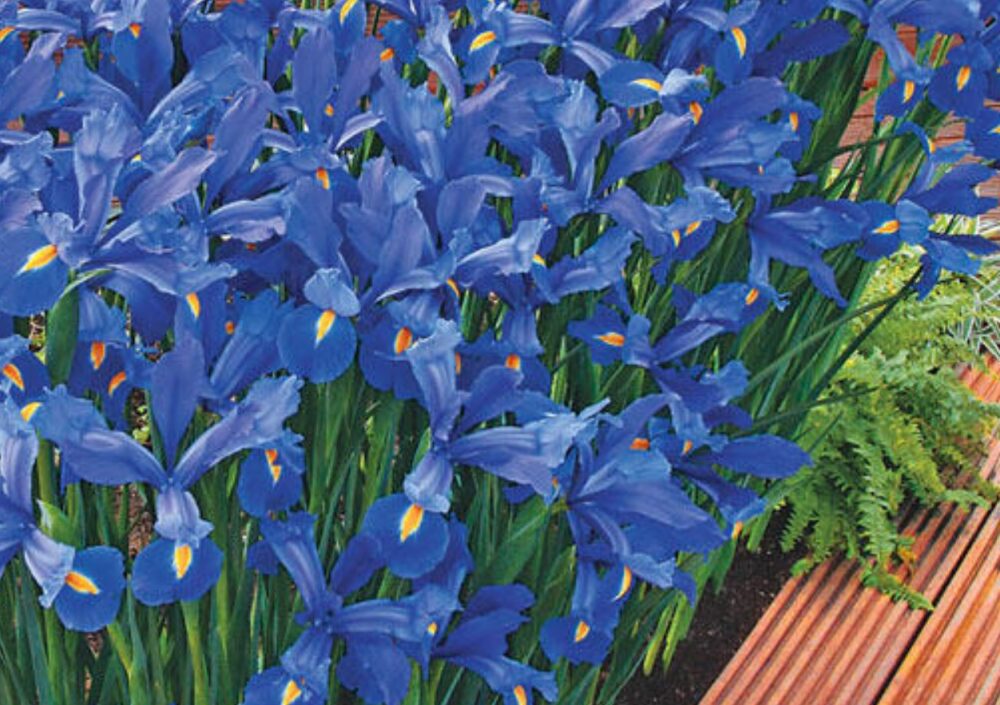
Where to see them.
Any public botanical garden will have irises among their general plantings. At the end of May the New York Botanical Garden can usually be counted on to have a spectacular display of irises. At the Brooklyn Botanic Garden, the tall bearded iris bloom in the Shakespeare Garden. Siberian iris are planted in the Conservatory Garden in Central Park, between 104th and 106th Streets on the east side. Blue flag (native) iris will be everywhere in non-tidal wetlands around the city. Many churchyards and small gardens that once had tulips will now have iris.
The Presby Memorial Iris Gardens of Montclair, NJ
Here are 14,000 irises in 3,000 varieties. The Presby Memorial Iris Gardens were founded in memory of Frank Presby, a leading citizen of Montclair and one of the founders of the American Iris Society. Located in Mountainside Park in 1923, over the years a dry creek bed was restored, bridges built, and Japanese and water-loving Louisianan irises located in that area. Bloom season lasts through the first week of June. On street parking. A $10 donation is recommended to help maintain the gardens. Hours and information here.
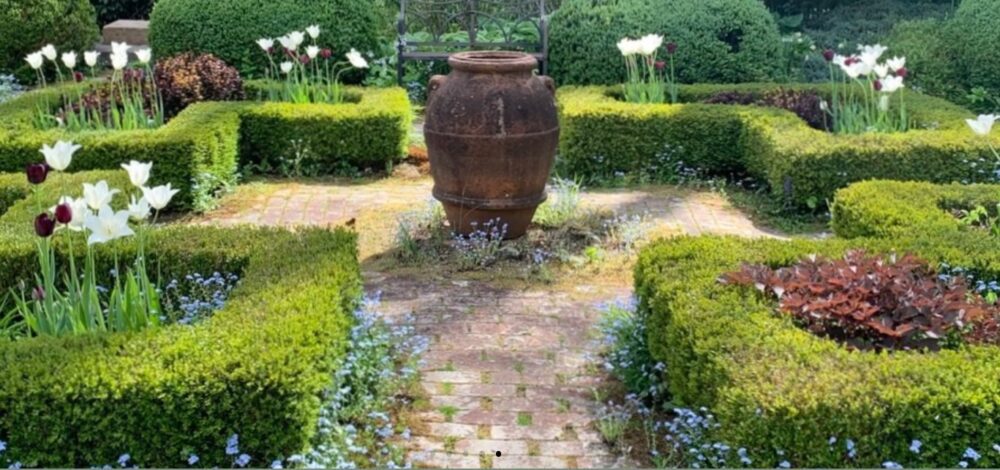
Hollister House, Washington, CT
